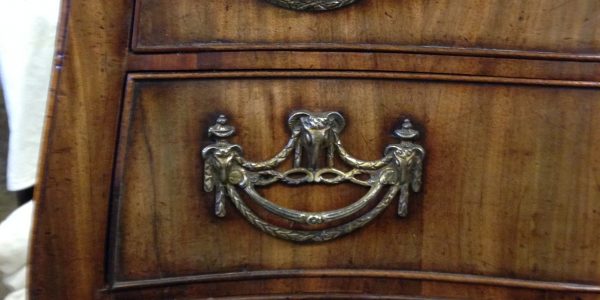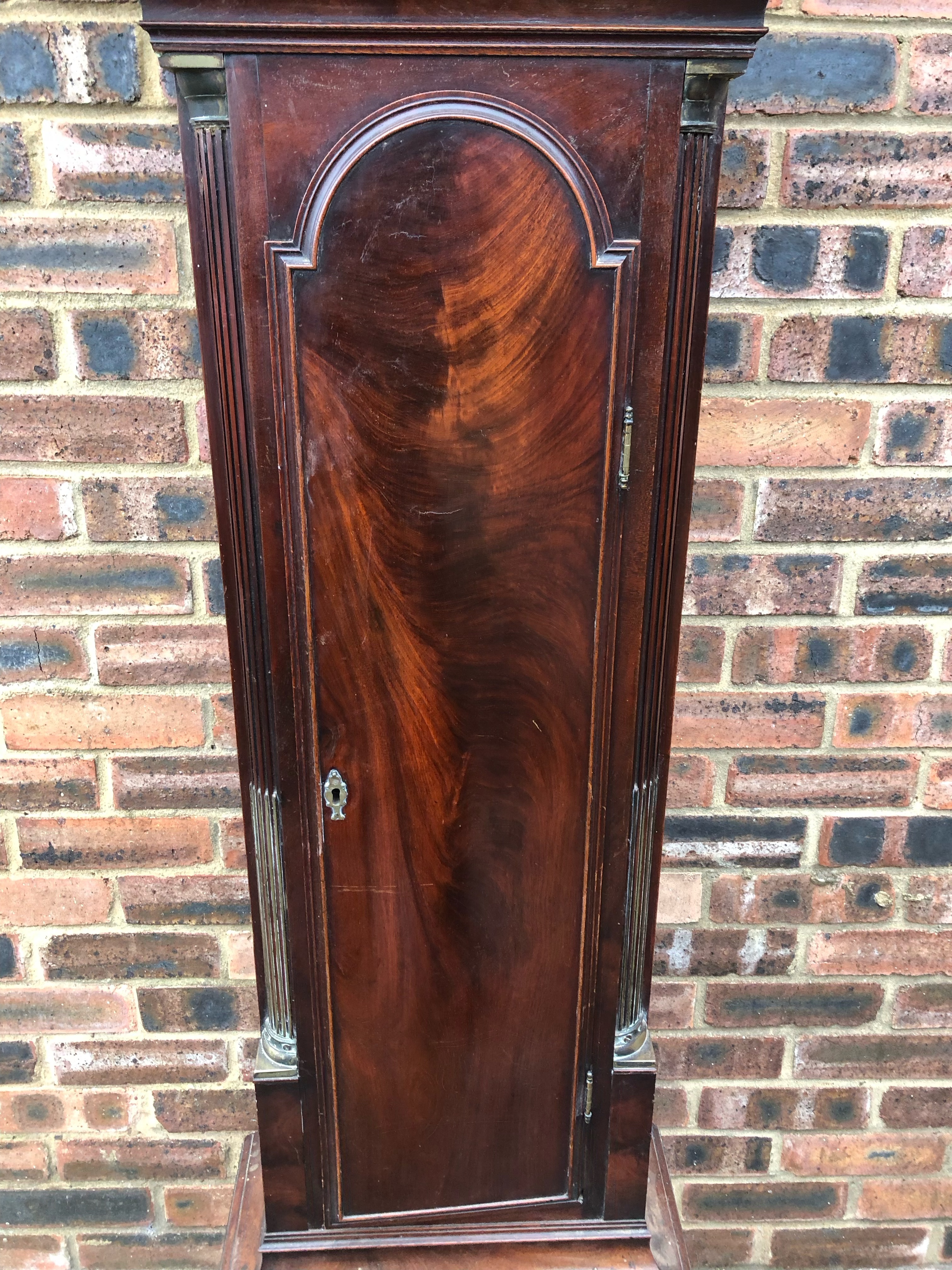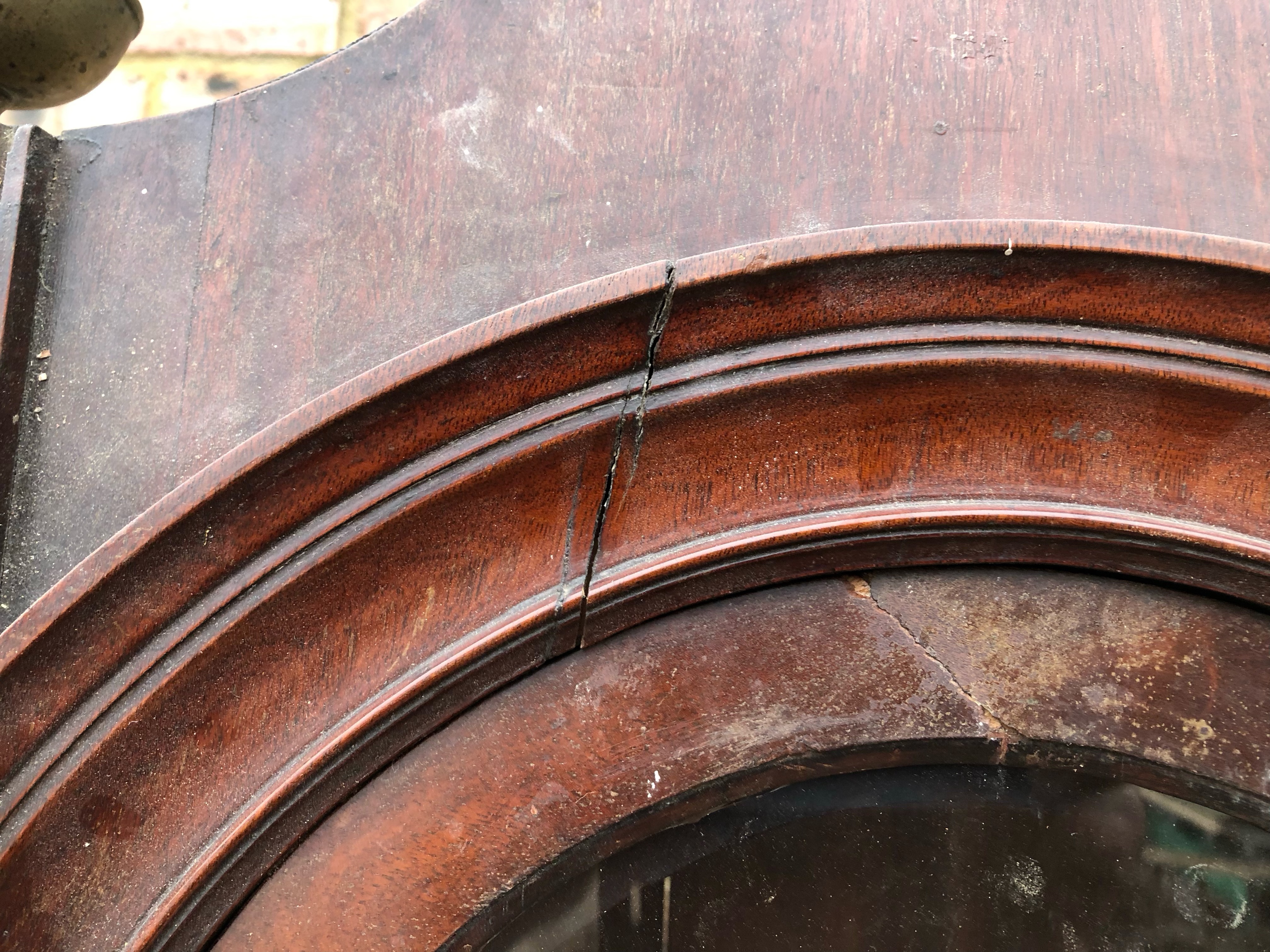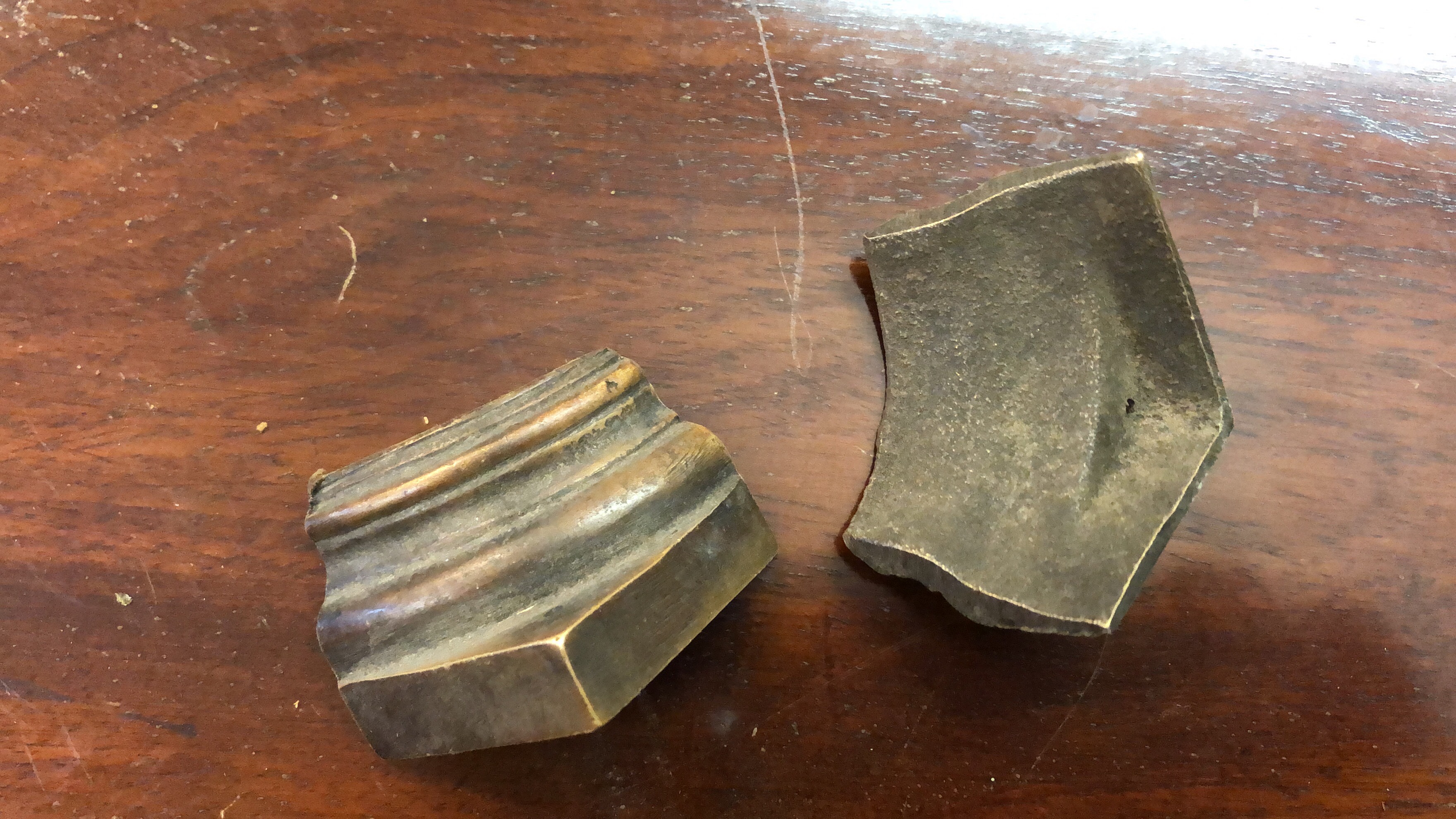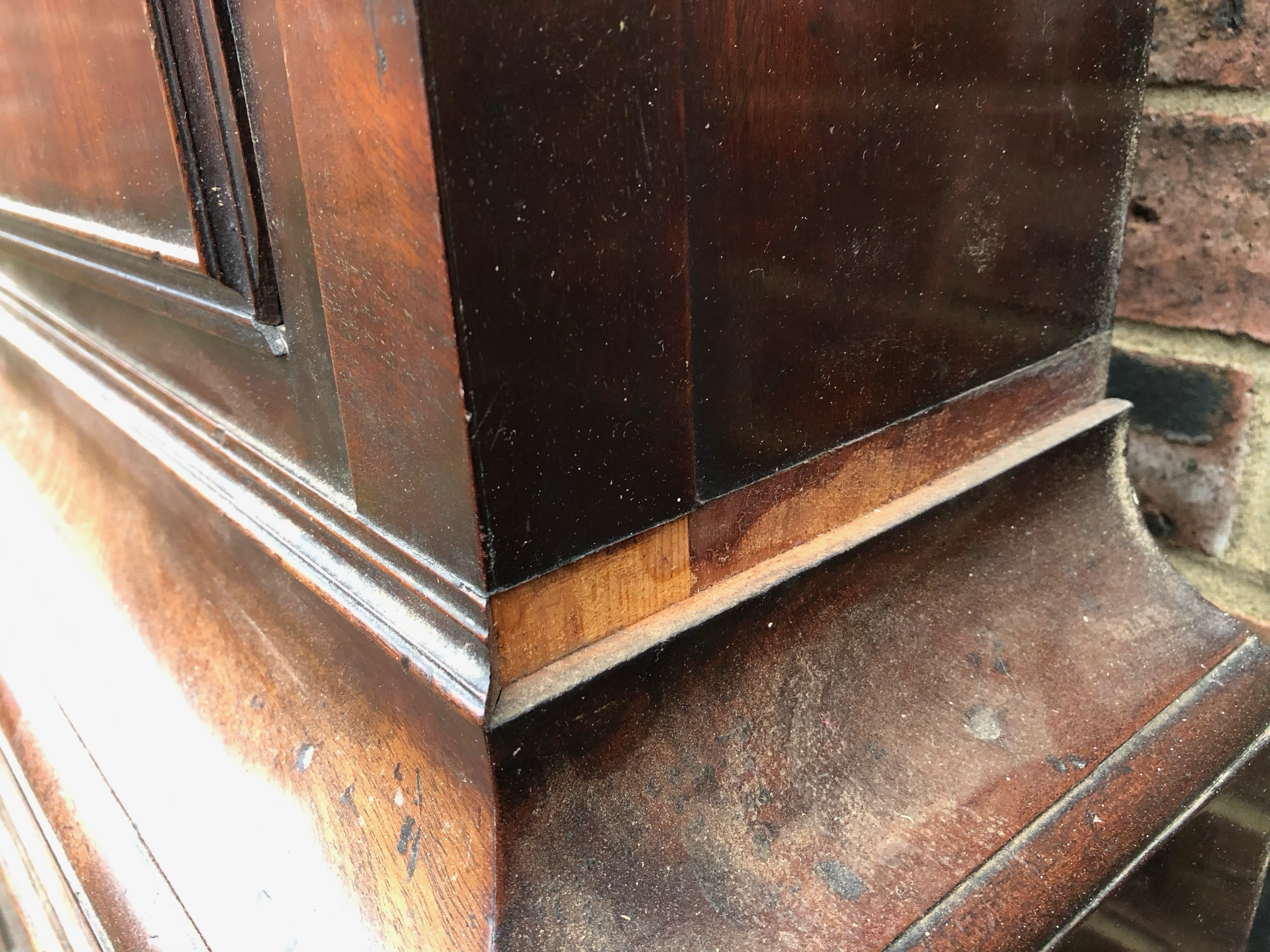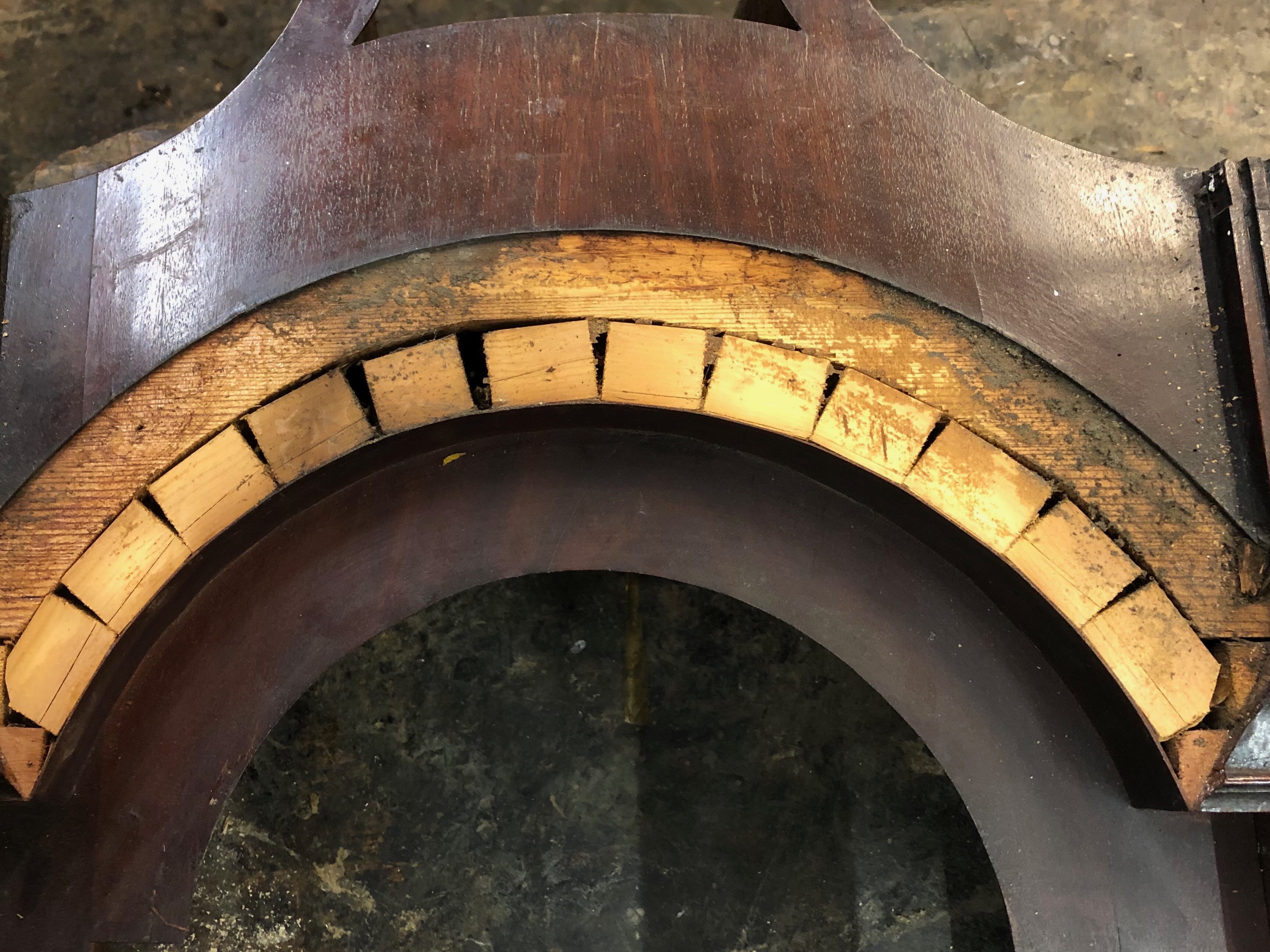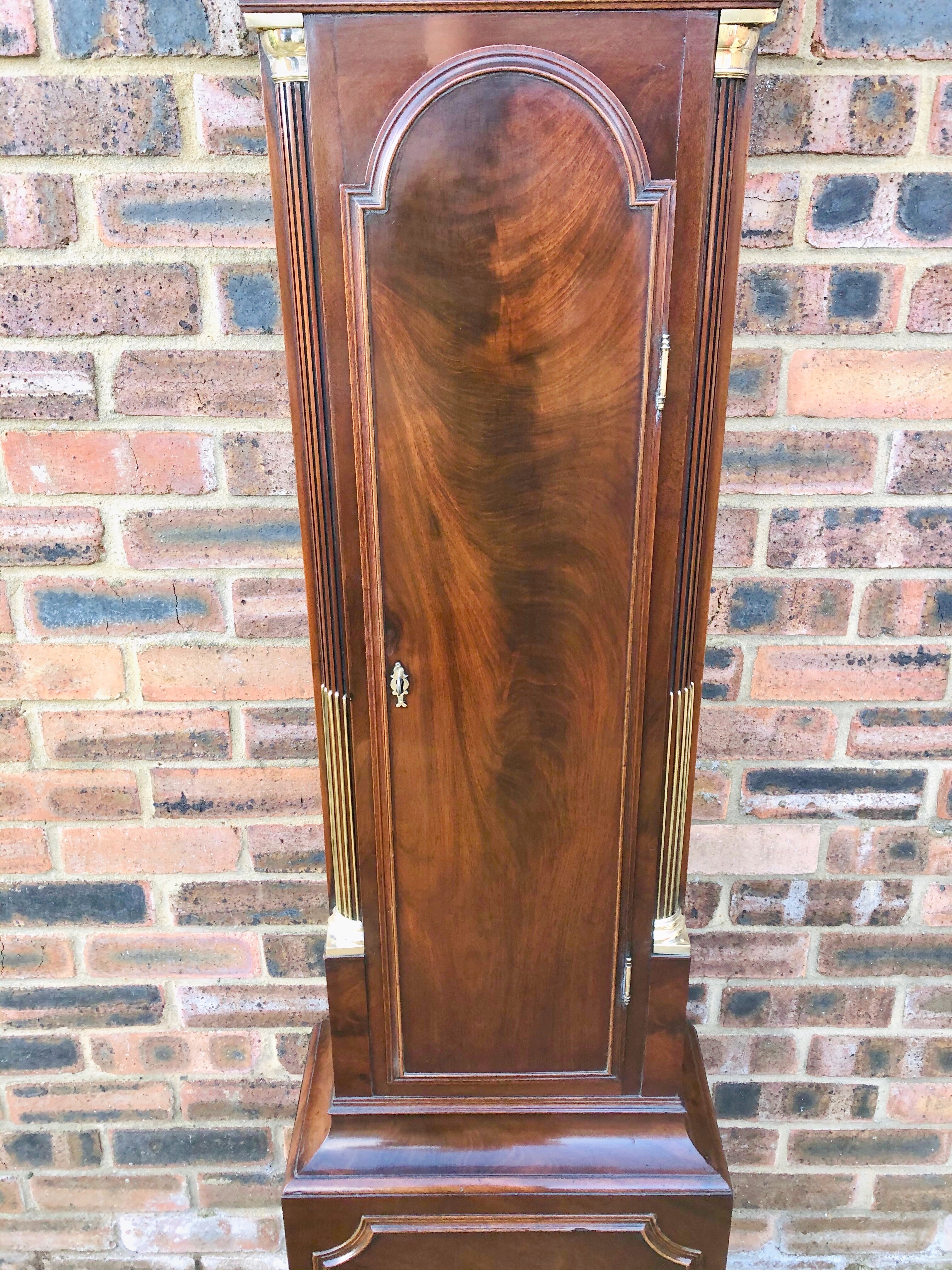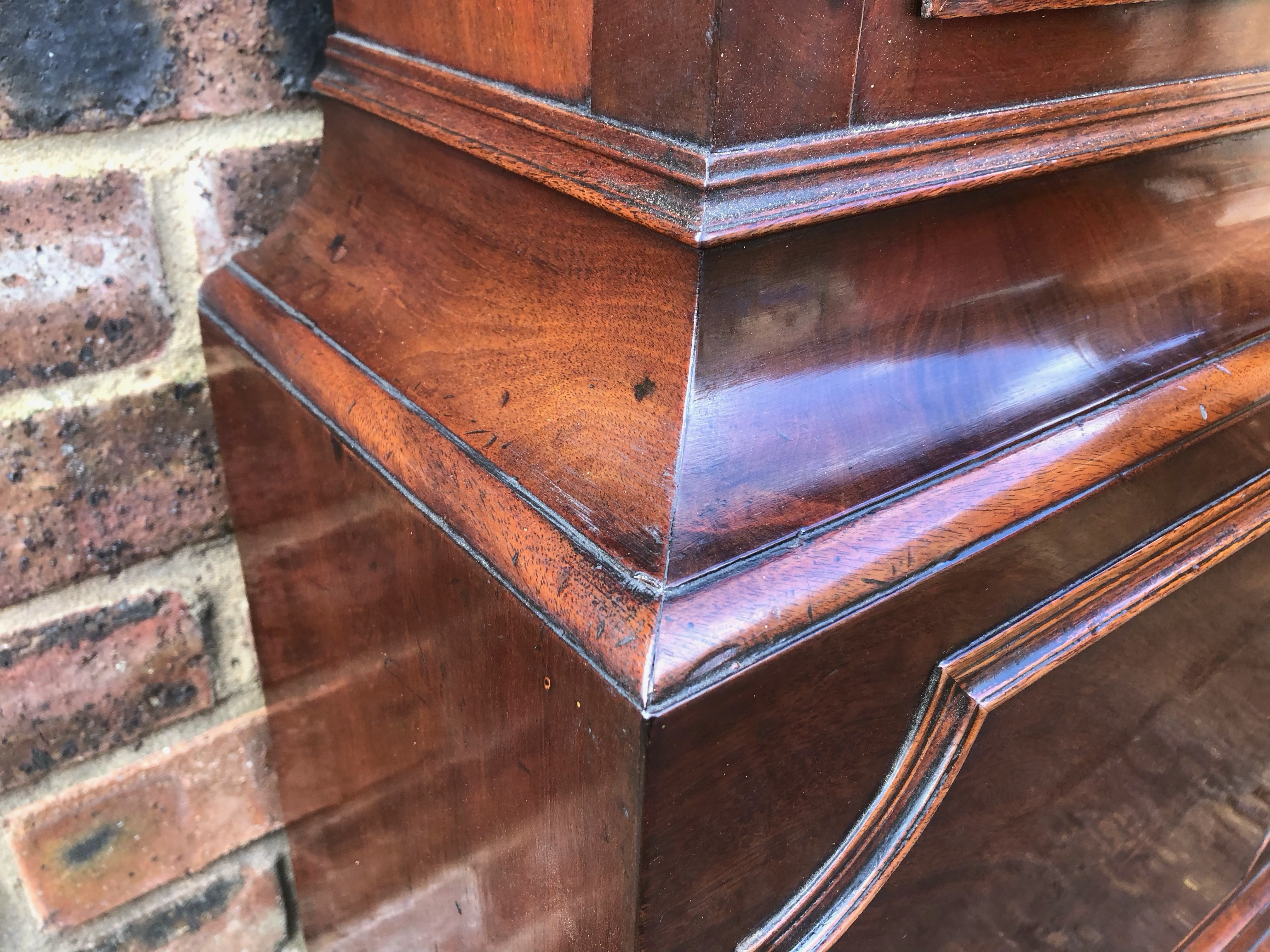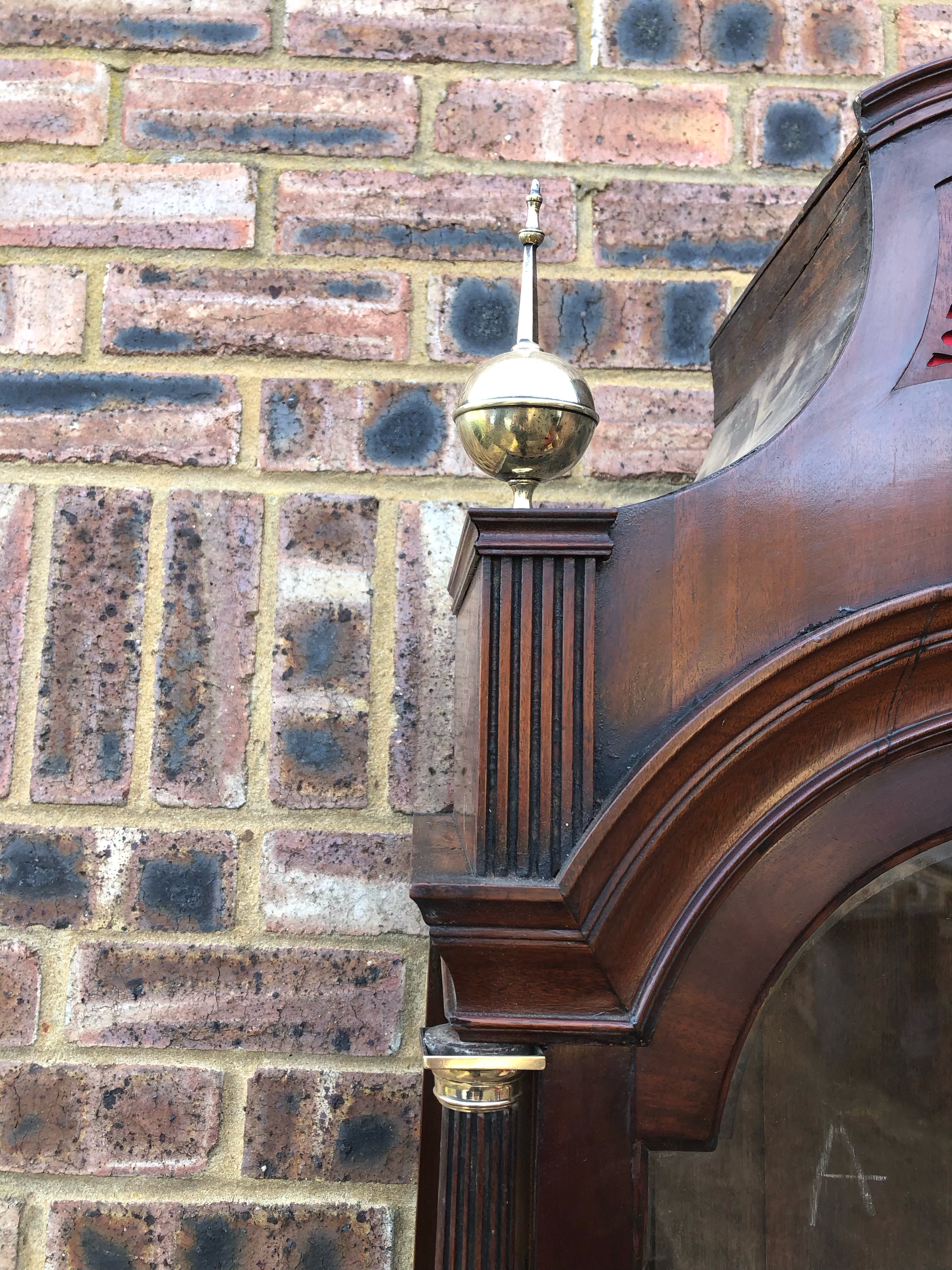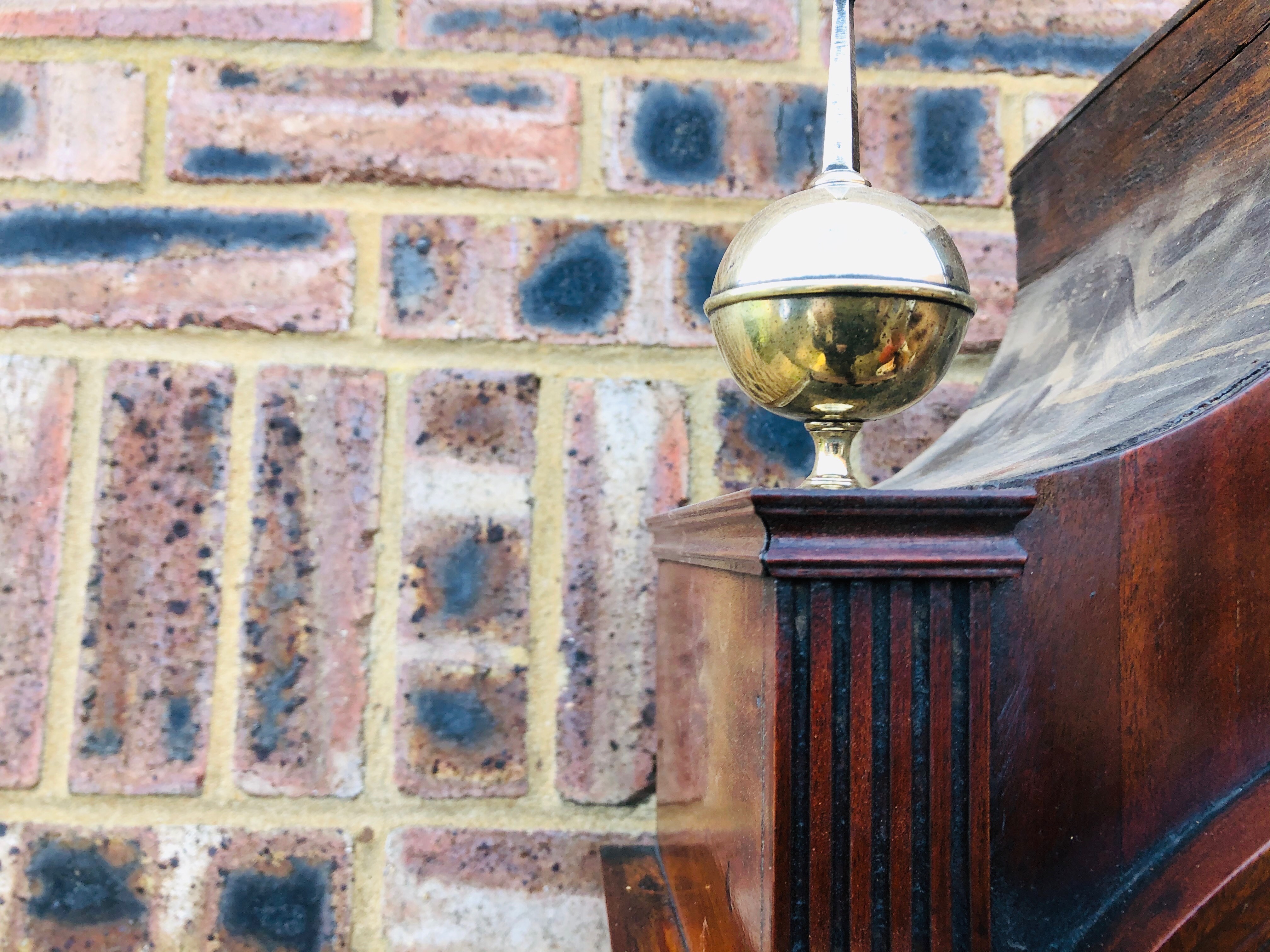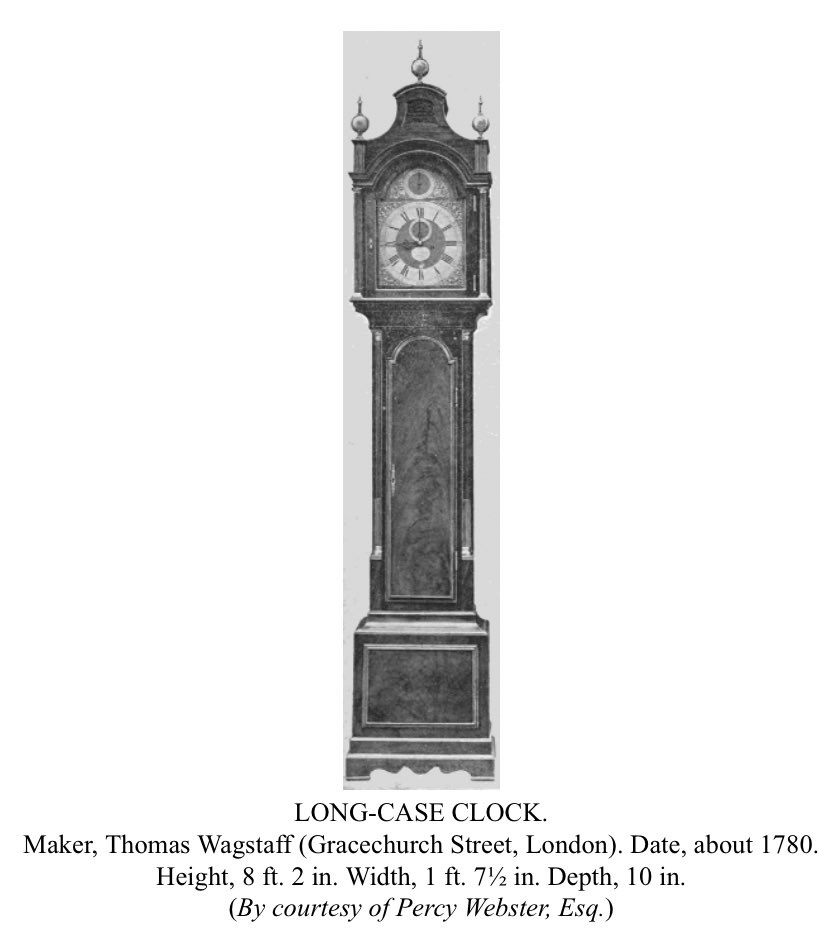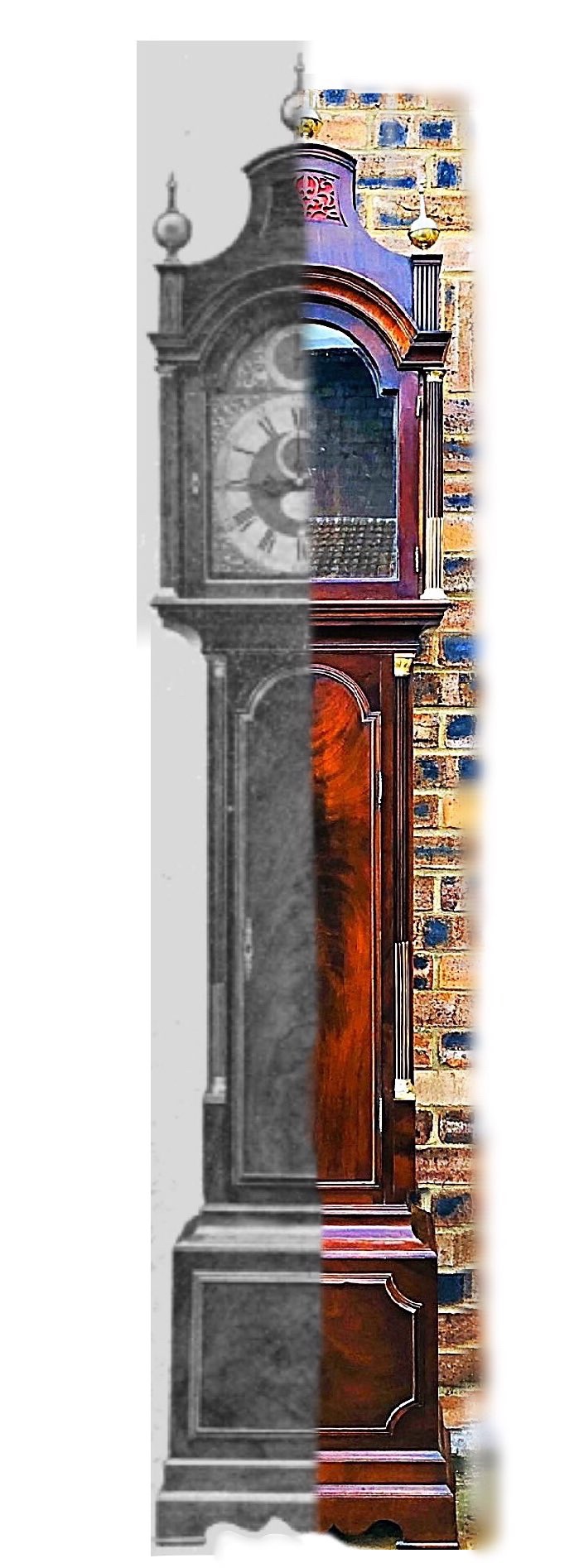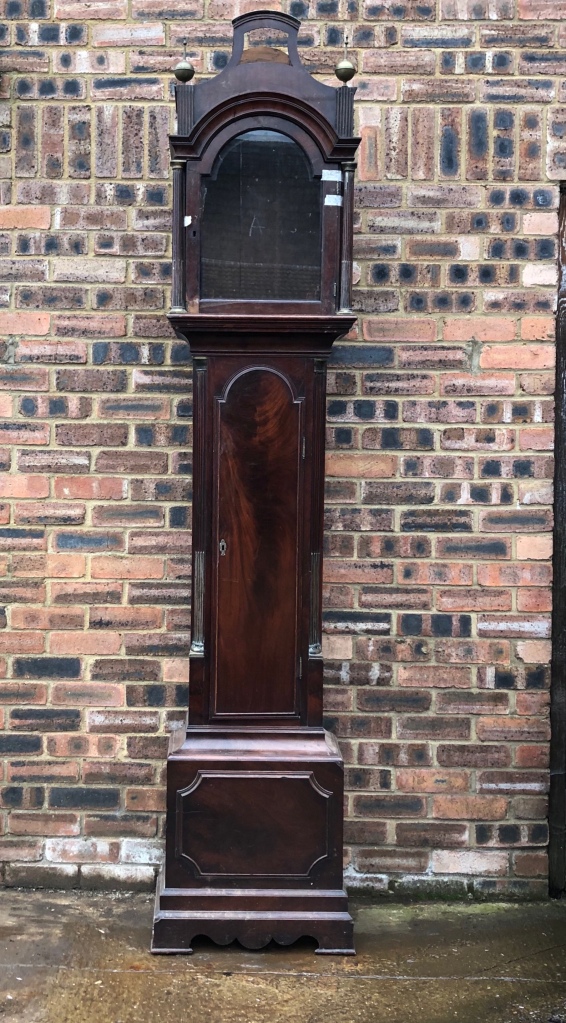
The long case clock come in for restoration recently after being purchased from a auction house by it owner. The London mahogany case come to me to be fully restored, the case would need some veneer chips around the case. The hood would take much of my time to repair, with the door being badly damaged and would require new hinges and the veneers to be removed and replaced with new timber, making a better repair. The hood with its pagoda top was missing its fret, this would need to cut to fit , designed and cut on the fret Saw . Around the hood and trunk ,their was some missing moulding , these would need to be made and fitted .
The first job of the restoration was to remove all brasses from the longcase clock. These would be polished and lacquered before being fitted after the woodwork was done. Unfortunately some of the brass reeds that are fitted to the hood columns and case were broken and missing, theses would need to be made in the workshop from solid brass rods . The clock case had brass capitals fitted to the case and badly fitted in previous restoration with some large screws. These would be replaced and fitted from new stock. Once all this was done I could then turn my attention to the woodwork
The case had the plinth fitted and some veneers repaired around the case , with some missing feet replaced on the back of the case . The hood would take most of my time with some mouldings be copied and made from some mahogany timber to replace the missing items . The hood had the veneer removed and replaced ,this would make a better repair , not having patches around the hood door. The fret was cut from some solid mahogany and fretted out on the saw , thus would be polished to match the case later on . Above the door the arch moulding had cracked and become loose , this would need to be removed and refitted closing the split and stop trapping the door each time it’s opened
Once all repairs were carried out , the new repairs were then sanded and level , I begin to clean the case with meths and fine wire oil. This removed the dirt from the surface and washed some of it in to the new repairs . Helping to age the repairs . Using and selecting old timber to match the original helps in the colouring and making the repairs disappear. The case was then French polished , thus was done over a period of time. Allowing the polish to sink into the wood before being redone, until I was happy with the finish . The clock case was then waxed to remove the high shine . I could then begin to refit the brassware back onto the case . Thus had already been cleaned,polished and lacquered . The fret was fitted with some red silk behind it. The case had some new glass cut and fitted with a couple keys made to fit the locks to complete the restoration of this case
The mahogany clock case made by Thomas wagstaff in 1780 bears a close resemblance to one featured in the clock makers guide . Only the base mouldings being slightly different . The case hadn’t changed in its life, as often the pagoda tops are removed to reduce the height of those cases from their 8foot height
All work can be provided with a quotation and collection and delivery by myself . I be happy to discuss any question you might have regarding your furniture . You can get in contact with me on my website www.chapmanrestoration.co.uk or ring me on 0784520970
